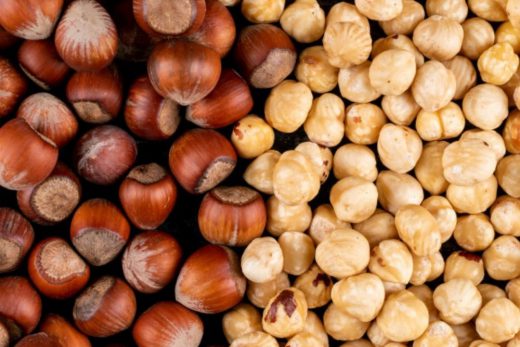A single egg helps give the crust structure and lends it a pale yellow color, while a touch of baking soda helps to further lighten the gata’s crumb. As for the fermentation itself, I leave the dough at room temperature for 30 minutes to get a jump-start on proofing before it goes into the refrigerator for at least four hours (or as long as overnight). Chilling the sticky, moist dough in the fridge while it proofs makes it easier to roll out and shape when the time comes.
A yeasted dough loaded with butter, sugar, Greek yogurt, and egg creates a tender, light bread-cake hybrid.
The filling, known as khoritz in Armenian, is a mixture of chopped walnuts, flour, butter, sugar, and vanilla that’s similar to a streusel.
The gata is filled with just a single layer, making it easy to assemble and shape.
At its most basic, a gata—also known as “kata”, “gatah”, or “katah”, depending upon who’s doing the transliteration—is a lightly sweetened, buttery Armenian cake, bread, or pastry meant to be served as part of a mezze (appetizer) spread, or with coffee or tea, or as a dessert.





